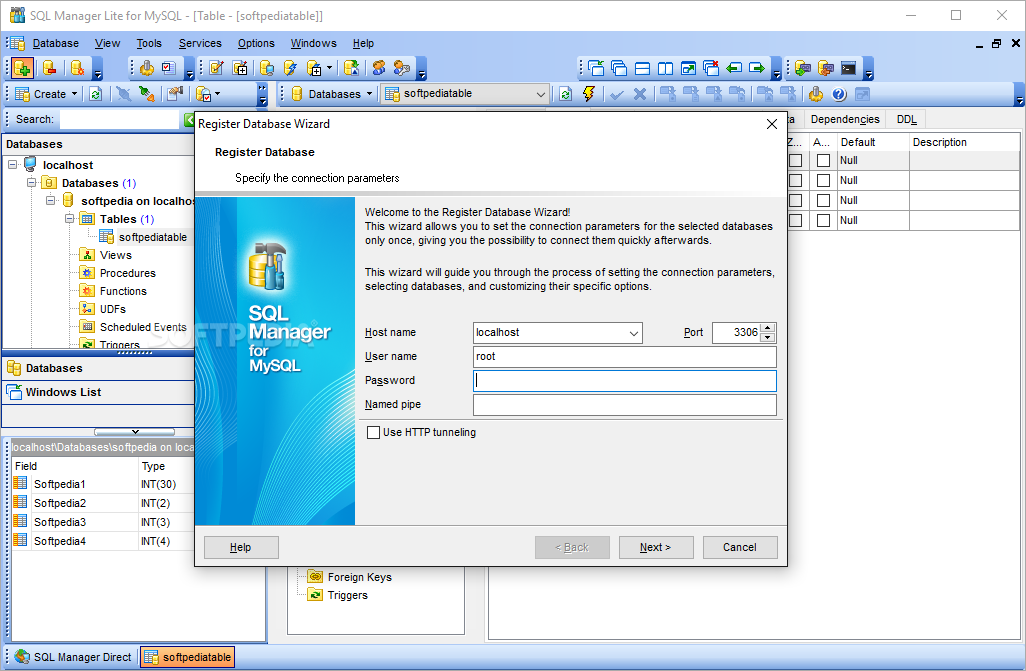دانلود RoboDB MySQL Database Manager v1.0.0 MacOSX - نرم افزار مدیریت پایگاه داده مایاسکیوال برای مک. بازدید: 1,695; دسته: دسکتاپ, نرم افزار, کاربردی. SolarWinds Database Performance Analyzer has the features of Machine Learning, Cross-Platform Database Support, Expert Tuning Advisors, Cloud Database Support, and Automation Management API, etc. Costs: The price for the software starts at $2107 and it offers a fully functional free trial for 14 days.
- 6.2.1 Account User Names and Passwords
- 6.2.2 Privileges Provided by MySQL
- 6.2.3 Grant Tables
- 6.2.4 Specifying Account Names
- 6.2.5 Specifying Role Names
- 6.2.6 Access Control, Stage 1: Connection Verification
- 6.2.7 Access Control, Stage 2: Request Verification
- 6.2.8 Adding Accounts, Assigning Privileges, and Dropping Accounts
- 6.2.9 Reserved Accounts
- 6.2.10 Using Roles
- 6.2.11 Account Categories
- 6.2.12 Privilege Restriction Using Partial Revokes
- 6.2.13 When Privilege Changes Take Effect
- 6.2.14 Assigning Account Passwords
- 6.2.15 Password Management
- 6.2.16 Server Handling of Expired Passwords
- 6.2.17 Pluggable Authentication
- 6.2.18 Proxy Users
- 6.2.19 Account Locking
- 6.2.20 Setting Account Resource Limits
- 6.2.21 Troubleshooting Problems Connecting to MySQL
- 6.2.22 SQL-Based Account Activity Auditing
MySQL enables the creation of accounts that permit client users to connect to the server and access data managed by the server. The primary function of the MySQL privilege system is to authenticate a user who connects from a given host and to associate that user with privileges on a database such as SELECT, INSERT, UPDATE, and DELETE. Additional functionality includes the ability to grant privileges for administrative operations.
To control which users can connect, each account can be assigned authentication credentials such as a password. The user interface to MySQL accounts consists of SQL statements such as CREATE USER, GRANT, and REVOKE. See Section 13.7.1, “Account Management Statements”.
The MySQL privilege system ensures that all users may perform only the operations permitted to them. As a user, when you connect to a MySQL server, your identity is determined by the host from which you connect and the user name you specify. When you issue requests after connecting, the system grants privileges according to your identity and what you want to do.

Robodb Mysql Database Manager Software
MySQL considers both your host name and user name in identifying you because there is no reason to assume that a given user name belongs to the same person on all hosts. For example, the user joe who connects from office.example.com need not be the same person as the user joe who connects from home.example.com. MySQL handles this by enabling you to distinguish users on different hosts that happen to have the same name: You can grant one set of privileges for connections by joe from office.example.com, and a different set of privileges for connections by joe from home.example.com. To see what privileges a given account has, use the SHOW GRANTS statement. For example:
Internally, the server stores privilege information in the grant tables of the mysql system database. The MySQL server reads the contents of these tables into memory when it starts and bases access-control decisions on the in-memory copies of the grant tables.
MySQL access control involves two stages when you run a client program that connects to the server:
Robodb Mysql Database Manager Tutorial

Stage 1: The server accepts or rejects the connection based on your identity and whether you can verify your identity by supplying the correct password.
Stage 2: Assuming that you can connect, the server checks each statement you issue to determine whether you have sufficient privileges to perform it. For example, if you try to select rows from a table in a database or drop a table from the database, the server verifies that you have the SELECT privilege for the table or the DROP privilege for the database.
For a more detailed description of what happens during each stage, see Section 6.2.6, “Access Control, Stage 1: Connection Verification”, and Section 6.2.7, “Access Control, Stage 2: Request Verification”. For help in diagnosing privilege-related problems, see Section 6.2.21, “Troubleshooting Problems Connecting to MySQL”.
If your privileges are changed (either by yourself or someone else) while you are connected, those changes do not necessarily take effect immediately for the next statement that you issue. For details about the conditions under which the server reloads the grant tables, see Section 6.2.13, “When Privilege Changes Take Effect”.

There are some things that you cannot do with the MySQL privilege system:
You cannot explicitly specify that a given user should be denied access. That is, you cannot explicitly match a user and then refuse the connection.
You cannot specify that a user has privileges to create or drop tables in a database but not to create or drop the database itself.
A password applies globally to an account. You cannot associate a password with a specific object such as a database, table, or routine.
